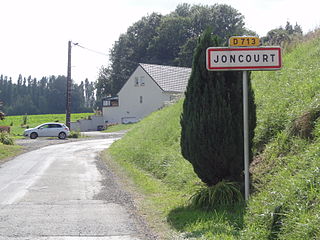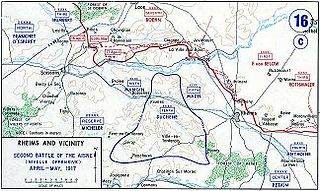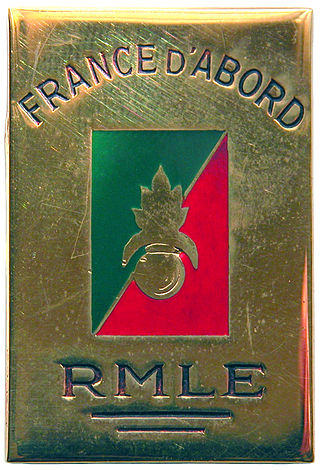
The Battle of Verdun was fought from 21 February to 18 December 1916 on the Western Front in France. The battle was the longest of the First World War and took place on the hills north of Verdun-sur-Meuse. The German 5th Army attacked the defences of the Fortified Region of Verdun and those of the French Second Army on the right (east) bank of the Meuse. Using the experience of the Second Battle of Champagne in 1915, the Germans planned to capture the Meuse Heights, an excellent defensive position, with good observation for artillery-fire on Verdun. The Germans hoped that the French would commit their strategic reserve to recapture the position and suffer catastrophic losses at little cost to the German infantry.
The British Expeditionary Force (BEF) was the six divisions the British Army sent to the Western Front during the First World War. Planning for a British Expeditionary Force began with the 1906–1912 Haldane Reforms of the British Army carried out by the Secretary of State for War Richard Haldane following the Second Boer War (1899–1902).

Givenchy-en-Gohelle is a commune in the Pas-de-Calais department in the Hauts-de-France region of France. The village was destroyed during World War I but was rebuilt after the war.

Bény-sur-Mer is a commune in the Calvados department in the Normandy region, in northwestern France. It lies 5 km south of Bernières-sur-Mer and 13 km north of Caen.

The Battle of Saint-Mihiel was a major World War I battle fought from 12–15 September 1918, involving the American Expeditionary Forces (AEF) and 110,000 French troops under the command of General John J. Pershing of the United States against German positions. The U.S. Army Air Service played a significant role in this action.

Foy is a village of Wallonia in the municipality of Bastogne, district of Noville, located in the province of Luxembourg in the Ardennes, Belgium.

Joncourt is a commune in the Aisne department in Hauts-de-France in northern France.

The Battle of Aubers was a British offensive on the Western Front on 9 May 1915 during the First World War. The battle was part of the British contribution to the Second Battle of Artois, a Franco-British offensive intended to exploit the German diversion of troops to the Eastern Front. The French Tenth Army was to attack the German 6th Army north of Arras and capture Vimy Ridge, preparatory to an advance on Cambrai and Douai. The British First Army, on the left (northern) flank of the Tenth Army, was to attack on the same day and widen the gap in the German defences expected to be made by the Tenth Army and to fix German troops north of La Bassée Canal.
The 8th Ersatz Division was a unit of the German Army in World War I. The division was formed on mobilization of the German Army in August 1914. The division was a composite division, formed from 14 brigade replacement battalions (Brigade-Ersatz-Bataillone) from the Kingdom of Württemberg, the Grand Duchy of Hesse, the Rhine Province, the Province of Hesse-Nassau and the Imperial Territory of Alsace-Lorraine. It became more Württemberg as the war progressed; and, in February 1917, it was officially designated a Royal Württemberg division. It was redesignated the 243rd Infantry Division in April 1917.
The 121st Infantry Division was a formation of the Imperial German Army in World War I. The division was formed on March 25, 1915, and organized over the next several weeks. It was part of a wave of new infantry divisions formed in the spring of 1915. The division was disbanded in 1919, during the demobilization of the German Army after World War I.

Montauville is a commune in the Meurthe-et-Moselle department in north-eastern France.

The Battle of the Boar's Head was an attack on 30 June 1916 at Richebourg-l'Avoué in France, during the First World War. Troops of the 39th Division, XI Corps in the First Army of the British Expeditionary Force (BEF), advanced to capture the Boar's Head, a salient held by the German 6th Army. Two battalions of the 116th Brigade, with one battalion forming carrying parties, attacked the German front position before dawn on 30 June. The British took and held the German front line trench and the second trench for several hours, before retiring to their lines having lost 850–1,366 casualties.

The Battle of the Hills also known as the Battle of the Hills of Champagne and the Third Battle of Champagne, was a battle of the First World War that was fought from April–May 1917. The French Fourth Army offensive against the German 4th Army was to support the Groupe d'armées du Nord along the Chemin des Dames, in the Second Battle of the Aisne. General Anthoine, commander of the Fourth Army planned a supporting attack but this was rejected by Nivelle and Anthoine planned a frontal attack by two corps on an 11 km (6.8 mi) front, to break through the German defences on the first day and commence exploitation the following day. The battle took place east of Reims, between Prunay and Aubérive, in the province of Champagne, along the Moronvilliers Hills.

Georges de Bazelaire was a Major General in the French Army. During World War I, Bazelaire commanded the 135th Infantry Regiment, the 27th and 38th Infantry Divisions and the 7th Army Corps.
Alben Square, also known as Alben Triangle, is located in the Borough Park neighborhood of Brooklyn, New York.

The Garibaldi Legion or officially the 4th Marching Regiment of the 1st Foreign Regiment was a unit of the Foreign Legion in the French Army which formed the Marching Regiment of the Foreign Legion composed entirely of Italian citizens, who fought in France in World War I against the Germans and existing ephemerally from the end of 1914 to 1915. After having distinguished themselves at Argonne in December 1914, the regiment was finally dissolved on May 5, 1915, due to Italy's entry in the war and the departure of the majority of the regiment back to their country of origin.

12th Infantry Division was an infantry division of the French Army which took part in the Napoleonic Wars, World War I and World War II. It fought at the Battle of the Nations in 1813. It was converted to a motorised infantry role at Mourmelon-le-Grand in 1939 a few days before the French declaration of war on Germany and renamed 12th Motorised Infantry Division

Henri Marie Lebocq (1861-1946) was a French Général de Division of World War I. He commanded several regiments during the war and was notable for being the main French commander at the Fighting at Bois-le-Prêtre, leading the 73rd Infantry Division during the engagement. He was also a recipient of the Grand Cross of the Legion of Honour.

















